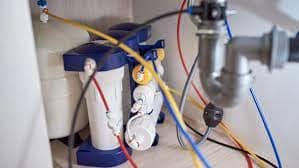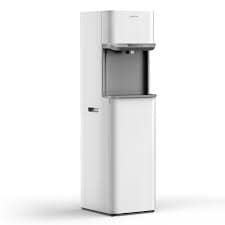Description
Ro system cost
Are you considering installing a reverse osmosis (RO) system in your home but are concerned about the cost? You’re not alone. Many homeowners are interested in the benefits of an RO system, but they want to know how much it will cost before making a decision.
In this article, we’ll explore the cost of RO systems and what factors affect the price. We’ll also discuss the benefits of an RO system and why it’s worth the investment. So, let’s dive in!
What is a Reverse Osmosis System?
Before we discuss the cost of an RO system, let’s first define what it is. A reverse osmosis system is a water filtration system that removes impurities from tap water. It uses a semi-permeable membrane to filter out contaminants, including bacteria, viruses, chemicals, and minerals.
RO systems are highly effective at removing impurities, which is why they’re commonly used in commercial and residential settings. They can provide clean, safe drinking water that tastes better than tap water.
How Much Does an RO System Cost?
The cost of an RO system can vary depending on several factors, including the brand, the type of system, and the features it includes. In general, you can expect to pay between $150 and $600 for an RO system for your home.
Here’s a breakdown of the different types of RO systems and their average costs:
Under-Sink RO Systems
Under-sink RO systems are installed beneath your kitchen sink and are connected to a separate faucet for drinking water. They typically cost between $150 and $300.
Countertop RO Systems
Countertop RO systems are compact and sit on your kitchen counter. They’re a great option if you have limited space under your sink. They typically cost between $200 and $400.
Whole-House RO Systems
Whole-house RO systems are designed to filter water for your entire home. They’re the most expensive option, typically costing between $500 and $600.
Factors That Affect the Cost of an RO System
Several factors can affect the cost of an RO system. Here are some of the most important ones to consider:
Brand
The brand of the RO system can affect the price. Some brands are known for producing high-quality systems, which can cost more than systems from lesser-known brands.
Type of System
The type of RO system you choose can also affect the cost. Under-sink systems are generally the most affordable, while whole-house systems are the most expensive.
Features
Some RO systems come with additional features, such as a UV filter or a remineralization stage. These features can increase the price of the system.
Installation
The cost of installation can also affect the overall cost of an RO system. If you’re handy and can install the system yourself, you’ll save money on installation costs. However, if you need to hire a professional, the cost can add up.
Why Invest in an RO System?
While an RO system may seem like a significant investment, it’s worth the cost for several reasons. Here are just a few of the benefits of installing an RO system in your home:
Better-Tasting Water
RO systems remove impurities and chemicals from tap water, which can improve its taste and smell. If you’re tired of drinking water that tastes like chlorine, an RO system can help.
Healthier Water
RO systems can remove harmful contaminants from tap water, including lead, arsenic, and fluoride. This can help improve the quality of the water you drink and reduce your risk of health problems.
Cost Savings
While an RO system may seem expensive upfront, it can actually save you money in the long run. By using an RO system, you’ll reduce the need to purchase bottled water, which can add up over time. You’ll also save money on plumbing repairs and appliance replacements, as impurities in tap water can cause damage to your pipes and appliances.
Eco-Friendly
Using an RO system can also be environmentally friendly. By reducing the need for bottled water, you’ll reduce the amount of plastic waste that ends up in landfills and oceans.
FAQs About RO System Costs
Here are some frequently asked questions about the cost of RO systems:
1. Are there ongoing costs associated with an RO system?
Yes, there are ongoing costs associated with an RO system. You’ll need to replace the filters every 6-12 months, which can cost between $30 and $100 depending on the system.
2. Is it expensive to maintain an RO system?
No, it’s not expensive to maintain an RO system. In addition to filter replacements, you may need to clean or sanitize the system periodically, but this is a simple process that can be done at home.
3. How long does an RO system last?
An RO system can last between 10 and 15 years with proper maintenance and care.
4. Can I install an RO system myself?
Yes, many RO systems are designed for easy installation and can be installed by homeowners with basic plumbing knowledge. However, if you’re not comfortable with DIY projects, you may want to hire a professional to install the system for you.
5. Do all RO systems provide the same level of filtration?
No, not all RO systems provide the same level of filtration. Some systems may remove more impurities than others, depending on the quality of the filters and the system design.
Conclusion
Installing a reverse osmosis system in your home is an investment that can provide clean, safe drinking water for you and your family. While the cost of an RO system can vary, it’s worth the investment for the benefits it provides.
By considering the factors that affect the cost of an RO system and the benefits of using one, you can make an informed decision about whether an RO system is right for your home.








Aqua Filter –
Aquaafilter is the only company I trust for all my water filter needs. Their staff is prompt, professional, and always willing to go above and beyond to ensure customer satisfaction.